a Peaceful Oasis Just Outside Washington DC
By Lara Lutz Chesapeake Bay Journeys Ft Washington Image by Steven L Markos copyright 2016
From the heights of Fort Washington Park, the shores of the Potomac River frame the skyline of the nation’s capital with the Washington Monument jutting toward the sky. Today, the city is a seat of national and international power, backed by an enormous military force with missiles, warships, aircraft and hundreds of thousands of soldiers at its disposal.
In 1809, it was defended by the earthen walls of Fort Washington, the ditch at its base and the cannons that lay inside. The fort was small, but well positioned on an outer bend of the Potomac River in Maryland, just a few miles south of the capital. Washington DC has changed dramatically over time, and the fort has too. The original structure, destroyed in 1814, was replaced by a brick fort in 1824 and later enlarged to include the long, massive walls that loom over the river today.
Fort Washington has enjoyed a remarkably peaceful riverside presence for more than 200 years. “It was never fired upon, and it never fired a shot in anger either,” said National Park Service ranger Barbara Wadding. Today, Fort Washington is a historic site and public park in the Chesapeake Bay Gateways Network and the Star-Spangled Banner National Historic Trail. Its 900-acre grounds include a 3-mile foot trail, paved bike lanes on the main road, picnic areas, woods and meadows. Fishermen gather constantly near the base of the Fort Washington lighthouse on the Potomac River. Birders visit, too, enjoying the frequent sight of eagles, bluebirds, kestrels and shoreline species like blue heron and osprey.
Urban life seems far away. Combined with the neighboring properties of Piscataway Park and National Colonial Farm, the shoreline here is quivering with the tender green leaves of spring. Downstream, on the Virginia side of the river, is George Washington’s historic estate, Mount Vernon. In morning light, its red roof can be seen through the trees from Fort Washington.
 George Washington often crossed the river to visit this site, which was home to the Digges family, and repeatedly urged that a fort be built here
George Washington often crossed the river to visit this site, which was home to the Digges family, and repeatedly urged that a fort be built here
The United States had barely finished its war for independence, and tensions with Britain ran high. The Chesapeake Bay had long served as a productive means of trade and travel, but it also provided an effective approach for the powerful British navy. Its rivers ran like exit ramps toward American cities, including Washington itself.
The Potomac River was the most obvious route to the capital, but George Washington saw a way to defend it — from Digges Point. “He knew the river, and he knew this part of the channel is unique,” Wadding said. The deepest part of the river swings east along the bend, forcing larger ships to move toward the Maryland shore, closer to the fort and its cannons. “This was the most defensible part of the river, before it goes upstream and widens,” Wadding said.
 Fort Washington has enjoyed a remarkably peaceful riverside presence for more than 200 years (Dave Harp)
Fort Washington has enjoyed a remarkably peaceful riverside presence for more than 200 years (Dave Harp)
The fort was built about 10 years after Washington’s death and originally called Fort Warburton. It took only five years before British warships did appear on the horizon. It was August 1814, and the War of 1812 was reaching its peak. The British were advancing on Washington. Thousands of troops landed along the Patuxent River in Southern Maryland and began marching inland. Others came by ship on the Potomac. American leaders believed the Potomac would deliver the thrust of the attack and realized too late that the real threat would arrive by land. On Aug. 24, after a brief battle at Bladensburg, MD, the British arrived in Washington and set fire to most public buildings, including the Capitol and the White House. But their ships hadn’t arrived. “The river is tidal, and it put them behind schedule,” Wadding said. British soldiers reversed their march. Three days later, seven British warships appeared on the river near Mount Vernon.
Inside Fort Warburton, U.S. Capt. Samuel Dyson had some problems. Dyson had taken command of the fort only 10 days earlier. He had 56 men. The cannons had not been tested — many of the gun stations were incomplete and installed on uneven platforms. Dyson estimated that they would only be able to fire about five of the guns from inside the fort and two from a small blockhouse.
 To make matters worse, British foot soldiers were rumored to be marching toward the fort to help their warships with an attack. Dyson and his officers took a vote. They agreed to destroy the fort rather than allow the British to capture it. They made an exit plan, then lit 3,000 pounds of stored gunpowder.
To make matters worse, British foot soldiers were rumored to be marching toward the fort to help their warships with an attack. Dyson and his officers took a vote. They agreed to destroy the fort rather than allow the British to capture it. They made an exit plan, then lit 3,000 pounds of stored gunpowder.
The tremendous explosion leveled the fort. The British then sailed upriver to Alexandria, VA, where they captured 21 vessels and raided local warehouses before rejoining the rest of the fleet and moving on to Baltimore.
Dyson’s supervisors weren’t happy with his decision or its outcome. After being court-marshaled for abandoning post and destroying government property, he was dismissed from service. The fort, however, rose again, this time with the increasingly popular name of Fort Washington. The most distinctive change was placing the fort on the bluff, rather than using the low ground by the river. “It was completely redesigned with a larger, new shape and a smaller water battery close to the shore,” Wadding said.
Today, the fort has a castle-like presence, a brooding river guardian with thick high walls and a dry moat. Guests enter the grassy courtyard through a decorative arch, where gears and pulleys mark the operation of a drawbridge that no longer exists. Although the fort was in active military use through 1946 and spawned hundreds of buildings and tent quarters on the surrounding grounds, the interior of the old fort retains a much older feel. The guard rooms on either side of the gate feature fireplaces and worn wooden floors. Light filters through tall windows, but the prison cells are dank and dismal. Along the interior parade grounds, the barracks and officers’ quarters are a paired set of two-story brick buildings, each with a tiered white porch. Modern military aircraft occasionally roar overhead, oddly matched by the eagles and osprey that weave through the air with fish in their talons.
 Wadding looks at the brickwork and the cannon stations, which are mostly empty, and sees signs of endless change and adaptation. Over and again, engineers tinkered with the fort to change the types and numbers of guns, update water and power sources, and convert parts of the fort to new uses. In the late 1800s, defensive batteries of steel and concrete were built around the fort’s exterior. Their crumbling remains, including a gun tower, exist in the park today.
Wadding looks at the brickwork and the cannon stations, which are mostly empty, and sees signs of endless change and adaptation. Over and again, engineers tinkered with the fort to change the types and numbers of guns, update water and power sources, and convert parts of the fort to new uses. In the late 1800s, defensive batteries of steel and concrete were built around the fort’s exterior. Their crumbling remains, including a gun tower, exist in the park today.
When the Spanish-American War began in 1898, an electrified minefield was laid down in the Potomac River. Fort Washington housed the generator. But not all the changes had a military purpose. Some just made life more comfortable. For example, the well water turned brackish shortly after the new fort opened, so the residents installed cisterns to collect rainwater. In the 20th century, the vault of one cistern was re-purposed to house a power source for the barracks. Casements on the fort’s lower level were intended for cannons, but one was quickly abandoned. “The ventilation system did not function well and you ended up with roomfuls of smoke,” Wadding said. “They used it for storage and laundry.”
Another casement may never have housed guns at all. “There’s no evidence they ever put them in there,” Wadding said. “But there is evidence they turned it into a bakery.”
 Fort Washington became home to the capital’s honor guard and was also used for a variety of training purposes. Historic photos in a park exhibit show the impressive colony of buildings and people that once filled its grounds. Now, all but three of the buildings that grew up around the fort are gone. An old home and aging gymnasium, both sealed up and closed to the public, sit near the park entrance. A yellow brick house, built in 1921 for the fort’s commander, is perched above the river next to the fort and serves as the visitor center. As the fort lost buildings and people, the upstream metropolitan area continued to grow. Today, Fort Washington has delivered a public benefit that was never part of its plan – a large swath of preserved green space along an intensely developed urban corridor where people can walk their dogs on a riverside trail, cast a fishing line and imagine a time when this spit of waterfront land could help the nation feel secure.
Fort Washington became home to the capital’s honor guard and was also used for a variety of training purposes. Historic photos in a park exhibit show the impressive colony of buildings and people that once filled its grounds. Now, all but three of the buildings that grew up around the fort are gone. An old home and aging gymnasium, both sealed up and closed to the public, sit near the park entrance. A yellow brick house, built in 1921 for the fort’s commander, is perched above the river next to the fort and serves as the visitor center. As the fort lost buildings and people, the upstream metropolitan area continued to grow. Today, Fort Washington has delivered a public benefit that was never part of its plan – a large swath of preserved green space along an intensely developed urban corridor where people can walk their dogs on a riverside trail, cast a fishing line and imagine a time when this spit of waterfront land could help the nation feel secure.
Fort Washington Lighthouse a guiding light has stood at Fort Washington since 1857, when a pulley system was used to raise an oil lamp to the top of a light pole. The 32-foot lighthouse that operates on site today was originally a fog bell tower that was installed in 1882 and was modified to include a light in 1901. The interior of the Fort Washington Lighthouse is open to visitors during the annual Maryland Lighthouse Challenge.
A Travel Plan to Visit
Fort Washington Southern Maryland Alexandria VA and Washington DC

38.707338
-77.023031
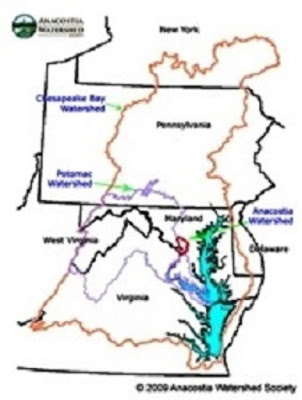










































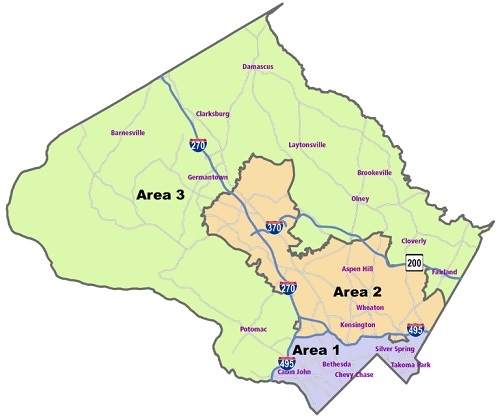


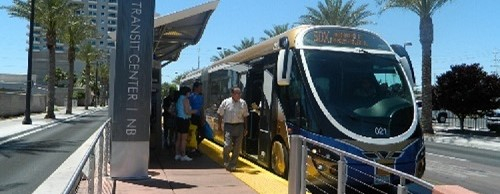


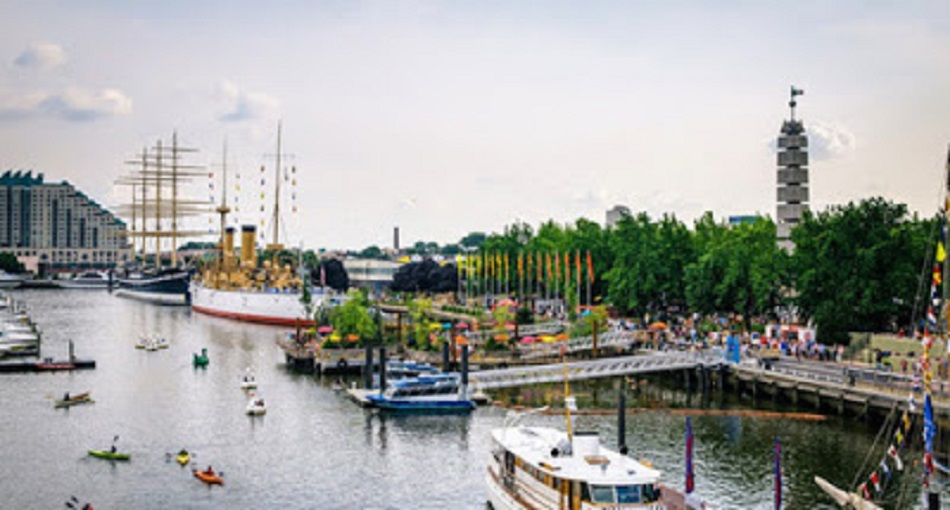
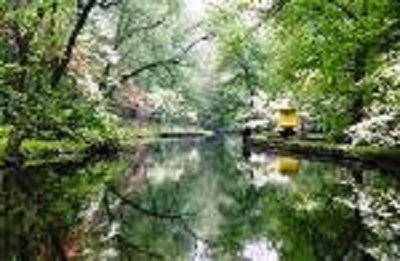


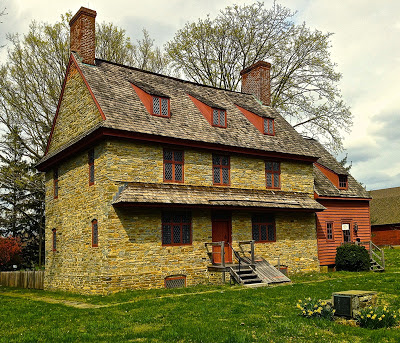


 The original settlement of New Orleans and the oldest neighborhood in the city is Vieux Carre, better known as the French Quarter. Established by the French in 1718, the location continues to be a valuable site for trade to its strategic position along the Mississippi River. The district is a National Historic Landmark and is bordered by popular streets, such as Canal, Decatur and Rampart Streets and Esplanade Avenue. The French Quarter boasts cultural contributions from the French, Spanish, Italians, Africans, Irish and others as demonstrated by the development of New Orleans as a global port.
The original settlement of New Orleans and the oldest neighborhood in the city is Vieux Carre, better known as the French Quarter. Established by the French in 1718, the location continues to be a valuable site for trade to its strategic position along the Mississippi River. The district is a National Historic Landmark and is bordered by popular streets, such as Canal, Decatur and Rampart Streets and Esplanade Avenue. The French Quarter boasts cultural contributions from the French, Spanish, Italians, Africans, Irish and others as demonstrated by the development of New Orleans as a global port. Mobile Alabama is located at the head of Mobile Bay and the Central Gulf Coast. Mobile was founded by the French in 1702. During its first 100 years, Mobile was a colony of France, Britain and Spain; it became a part of the United States of America in 1813.
Mobile Alabama is located at the head of Mobile Bay and the Central Gulf Coast. Mobile was founded by the French in 1702. During its first 100 years, Mobile was a colony of France, Britain and Spain; it became a part of the United States of America in 1813.

 Asheville has a fascinating past; experience a walking itinerary that commemorates the city’s most significant cultural, educational, social and architecture stories; a museum without walls. Urban Farm and Mountain Trails Gourmet Cuisine Public Art Music Heritage and a Bohemian Culture.
Asheville has a fascinating past; experience a walking itinerary that commemorates the city’s most significant cultural, educational, social and architecture stories; a museum without walls. Urban Farm and Mountain Trails Gourmet Cuisine Public Art Music Heritage and a Bohemian Culture.
 George Washington often crossed the river to visit this site, which was home to the Digges family, and repeatedly urged that a fort be built here
George Washington often crossed the river to visit this site, which was home to the Digges family, and repeatedly urged that a fort be built here Fort Washington has enjoyed a remarkably peaceful riverside presence for more than 200 years (Dave Harp)
Fort Washington has enjoyed a remarkably peaceful riverside presence for more than 200 years (Dave Harp) To make matters worse, British foot soldiers were rumored to be marching toward the fort to help their warships with an attack. Dyson and his officers took a vote. They agreed to destroy the fort rather than allow the British to capture it. They made an exit plan, then lit 3,000 pounds of stored gunpowder.
To make matters worse, British foot soldiers were rumored to be marching toward the fort to help their warships with an attack. Dyson and his officers took a vote. They agreed to destroy the fort rather than allow the British to capture it. They made an exit plan, then lit 3,000 pounds of stored gunpowder. Wadding looks at the brickwork and the cannon stations, which are mostly empty, and sees signs of endless change and adaptation. Over and again, engineers tinkered with the fort to change the types and numbers of guns, update water and power sources, and convert parts of the fort to new uses. In the late 1800s, defensive batteries of steel and concrete were built around the fort’s exterior. Their crumbling remains, including a gun tower, exist in the park today.
Wadding looks at the brickwork and the cannon stations, which are mostly empty, and sees signs of endless change and adaptation. Over and again, engineers tinkered with the fort to change the types and numbers of guns, update water and power sources, and convert parts of the fort to new uses. In the late 1800s, defensive batteries of steel and concrete were built around the fort’s exterior. Their crumbling remains, including a gun tower, exist in the park today. Fort Washington became home to the capital’s honor guard and was also used for a variety of training purposes. Historic photos in a park exhibit show the impressive colony of buildings and people that once filled its grounds. Now, all but three of the buildings that grew up around the fort are gone. An old home and aging gymnasium, both sealed up and closed to the public, sit near the park entrance. A yellow brick house, built in 1921 for the fort’s commander, is perched above the river next to the fort and serves as the visitor center. As the fort lost buildings and people, the upstream metropolitan area continued to grow. Today, Fort Washington has delivered a public benefit that was never part of its plan – a large swath of preserved green space along an intensely developed urban corridor where people can walk their dogs on a riverside trail, cast a fishing line and imagine a time when this spit of waterfront land could help the nation feel secure.
Fort Washington became home to the capital’s honor guard and was also used for a variety of training purposes. Historic photos in a park exhibit show the impressive colony of buildings and people that once filled its grounds. Now, all but three of the buildings that grew up around the fort are gone. An old home and aging gymnasium, both sealed up and closed to the public, sit near the park entrance. A yellow brick house, built in 1921 for the fort’s commander, is perched above the river next to the fort and serves as the visitor center. As the fort lost buildings and people, the upstream metropolitan area continued to grow. Today, Fort Washington has delivered a public benefit that was never part of its plan – a large swath of preserved green space along an intensely developed urban corridor where people can walk their dogs on a riverside trail, cast a fishing line and imagine a time when this spit of waterfront land could help the nation feel secure.

 Chestnut Hill is a beautiful award-winning neighborhood in northwest Philadelphia renowned for its gardens, art and architecture, parks, shopping, dining and many diverse, culturally enriching experiences.
Chestnut Hill is a beautiful award-winning neighborhood in northwest Philadelphia renowned for its gardens, art and architecture, parks, shopping, dining and many diverse, culturally enriching experiences. The neighborhood is nestled along the 1,800 acres of Wissahickon Valley Park, part of Philadelphia’s 9,200-acre Fairmount Park with biking, hiking, fishing in season, horseback riding and picnicking. For nature enthusiasts, one of the special attractions of the park is the Thomas Mill Road Covered Bridge which is the only remaining covered bridge in the Wissahickon. Not far from the bridge is the path leading to the 15 ft high statue of a kneeling Lenape warrior sculpted in 1902 by John Massey Rhind to commemorate the passing of the native Lenape from the region.
The neighborhood is nestled along the 1,800 acres of Wissahickon Valley Park, part of Philadelphia’s 9,200-acre Fairmount Park with biking, hiking, fishing in season, horseback riding and picnicking. For nature enthusiasts, one of the special attractions of the park is the Thomas Mill Road Covered Bridge which is the only remaining covered bridge in the Wissahickon. Not far from the bridge is the path leading to the 15 ft high statue of a kneeling Lenape warrior sculpted in 1902 by John Massey Rhind to commemorate the passing of the native Lenape from the region. One of the most popular destinations in the park is the historic Valley Green Inn, built in 1851. It is the last remaining example of the many roadhouses and taverns that served and watered the carriage trade along the Wissahickon in the 19th Century; the Inn is still serving delicious meals today.
One of the most popular destinations in the park is the historic Valley Green Inn, built in 1851. It is the last remaining example of the many roadhouses and taverns that served and watered the carriage trade along the Wissahickon in the 19th Century; the Inn is still serving delicious meals today. The Woodmere Art Museum is housed in a beautiful Victorian mansion; it focuses on the art and artists, both historical and contemporary, of the Philadelphia region. Among the artists represented are Violet Oakley, Benjamin West, Arthur Charles, and N.C. Wyeth. There are also juried exhibits of local painters and sculptors, solo shows of promising newcomers, and sculptures displayed on its grounds.
The Woodmere Art Museum is housed in a beautiful Victorian mansion; it focuses on the art and artists, both historical and contemporary, of the Philadelphia region. Among the artists represented are Violet Oakley, Benjamin West, Arthur Charles, and N.C. Wyeth. There are also juried exhibits of local painters and sculptors, solo shows of promising newcomers, and sculptures displayed on its grounds. Shopping and dining are the cornerstones of life in Chestnut Hill. Germantown Avenue, the cobblestoned street that runs through the heart of the neighborhood, is lined with more than 85 shops including one-of-a-kind boutiques, an old-fashioned hardware store, home furnishings, art galleries, antique shops, a garden center and flower shops, farmers markets, spas and more. Dining options also abound, with both casual and sophisticated restaurants, taverns and cafes offering a variety of American and ethnic dishes.
Shopping and dining are the cornerstones of life in Chestnut Hill. Germantown Avenue, the cobblestoned street that runs through the heart of the neighborhood, is lined with more than 85 shops including one-of-a-kind boutiques, an old-fashioned hardware store, home furnishings, art galleries, antique shops, a garden center and flower shops, farmers markets, spas and more. Dining options also abound, with both casual and sophisticated restaurants, taverns and cafes offering a variety of American and ethnic dishes. Festivals Chestnut Hill hosts theHome & Garden Festival in the spring, a Fall for the Arts Festival in October, and a Harry Potter Festival, also in October. When winter comes, the street is transformed for the holidays, with garlands of pine around shop windows and lamp posts, barrels filled with berries and greenery, and thousands of twinkling white lights decorating the trees. Roasted chestnuts, carolers, brass quartets and special shopping nights are part of the holiday tradition in Chestnut Hill.
Festivals Chestnut Hill hosts theHome & Garden Festival in the spring, a Fall for the Arts Festival in October, and a Harry Potter Festival, also in October. When winter comes, the street is transformed for the holidays, with garlands of pine around shop windows and lamp posts, barrels filled with berries and greenery, and thousands of twinkling white lights decorating the trees. Roasted chestnuts, carolers, brass quartets and special shopping nights are part of the holiday tradition in Chestnut Hill.
 The Chesapeake and Delaware Canal was a shallow canal with locks after its construction in 1829; it was deepened in the early 20th century to sea level. The north-south section of the Mason-Dixon Line forms the border between Maryland and Delaware. The border was originally marked every mile by a stone, and every five miles by a crownstone. It was surveyed as a compromise solution to a century-long wrangle between the Penn and Calvert families. Commercial east-west ties between Delaware and Maryland towns were culturally significant in Colonial and Early American periods despite the border line. Trade with Philadelphia was conducted by overland routes to Delaware towns like Smyrna and Odessa; these cultural connections continue to this day.
The Chesapeake and Delaware Canal was a shallow canal with locks after its construction in 1829; it was deepened in the early 20th century to sea level. The north-south section of the Mason-Dixon Line forms the border between Maryland and Delaware. The border was originally marked every mile by a stone, and every five miles by a crownstone. It was surveyed as a compromise solution to a century-long wrangle between the Penn and Calvert families. Commercial east-west ties between Delaware and Maryland towns were culturally significant in Colonial and Early American periods despite the border line. Trade with Philadelphia was conducted by overland routes to Delaware towns like Smyrna and Odessa; these cultural connections continue to this day. Saint Michaels derives its name from the Episcopal Parish established in 1677 which attracted settlers that grew tobacco and engaged in shipbuilding. The town’s tourist industry has roots in the 19th century with steamboats from Baltimore and summer guest cottages opening for weeklong rentals. The opening of the maritime museum in 1965, waterfront activities and historic bay vessels added further impetus to travel and vacations to the town.
Saint Michaels derives its name from the Episcopal Parish established in 1677 which attracted settlers that grew tobacco and engaged in shipbuilding. The town’s tourist industry has roots in the 19th century with steamboats from Baltimore and summer guest cottages opening for weeklong rentals. The opening of the maritime museum in 1965, waterfront activities and historic bay vessels added further impetus to travel and vacations to the town.

 Oxford traces its start from 1666 when 30 acres were laid out as a town called Oxford by William Stephens, Jr. enjoying prominence as an international shipping center surrounded by wealthy tobacco plantations. Early inhabitants included Robert Morris, Sr., who greatly influenced the town’s growth; his son, Robert Morris, Jr., known as the financier of the Revolution; Jeremiah Banning, sea captain, war hero, and statesman; The Reverend Thomas Bacon, Anglican clergyman who wrote the first compilation of the laws of Maryland. Oxford has the oldest privately-operated ferry service still in continuous use in the United States originally established in 1683.
Oxford traces its start from 1666 when 30 acres were laid out as a town called Oxford by William Stephens, Jr. enjoying prominence as an international shipping center surrounded by wealthy tobacco plantations. Early inhabitants included Robert Morris, Sr., who greatly influenced the town’s growth; his son, Robert Morris, Jr., known as the financier of the Revolution; Jeremiah Banning, sea captain, war hero, and statesman; The Reverend Thomas Bacon, Anglican clergyman who wrote the first compilation of the laws of Maryland. Oxford has the oldest privately-operated ferry service still in continuous use in the United States originally established in 1683.